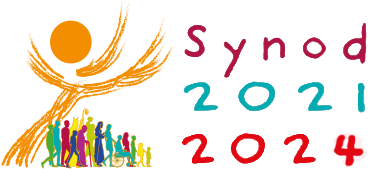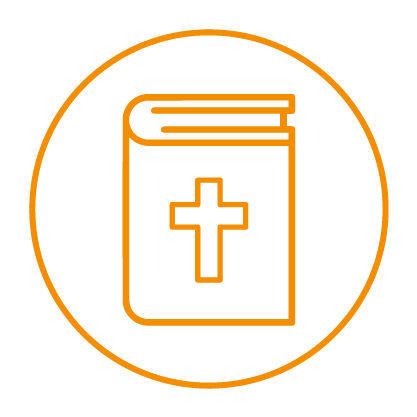Through this FAQ (Frequently Asked Questions) we intend to provide useful elements for understanding the Universal Phase of the Synodal Process.
As the Latin word suggests, the IL is first and foremost a working tool for the participants in the work of the first session of the 16th Ordinary General Assembly of the Synod of Bishops. In this sense, the IL does not suggest answers, but notes, articulates some insights that have emerged in the process, opens up questions and invites further study.
It is therefore also a document for the discernment of the participants in the October 2023 Assembly. In fact, unlike previous synods for which the IL was a document to be amended, improved, in order to arrive at a new document, the current IL is primarily aimed at and in support of the assembly's methodology. Although it is the complete fruit of the discernment made from the documents already written, the reading and reflection of the IL can be complemented by the reading of the Preparatory Document, the national syntheses, the Continental Stage Working Document and the seven documents of the Continental Assemblies without forgetting the one of the Digital Synod.
The IL constitutes a first - but not conclusive - point of arrival of the synodal process insofar as it is the fruit of the discernment that began with the consultation of the People of God at the local level. The fruits of this consultation were collected at the diocesan level and then summarised and sent to the Bishops' Conferences or Synods of the Eastern Catholic Churches. These in turn drafted a synthesis that was sent to the General Secretariat of the Synod in August 2021.
From the reading and analysis of the documents thus collected, a large group of experts had drafted the Working Document for the Continental Stage (DCS). The DCS was then returned to the local Churches around the world, inviting them to confront it and then meet and dialogue at the seven Continental Assemblies, while the work of the Digital Synod also continued. The aim was to focus on the insights and tensions that resonate most strongly with the experience of the Church on each continent, and to identify those that from the perspective of each continent represent the priorities to be addressed in the Synod Assembly in October 2023. Each Continental Assembly thus consensually produced a Final Document, as did the Digital Synod.
Based on all the material gathered during the listening phase, and in particular the Final Documents of the Continental Assemblies, the Instrumentum laboris (IL) was drafted.
Like any other document of the synodal process of the General Secretariat of the Synod, the IL is the fruit of work that involved a large number of people from various parts of the world and with different skills. First and foremost, the members of the Preparatory Commission for the XVI Ordinary General Assembly of the Synod of Bishops, set up on 15 March by the Secretary General of the General Secretariat of the Synod, but also the members of the XV Ordinary Council of the General Secretariat of the Synod who, accompanied by some Consultors and officers of the same Secretariat, also met with a number of prefects and secretaries of the Vatican dicasteries. Finally, the IL was sent to a number of theologians, canonists and other experts, and to all the prefects of the Vatican dicasteries for a final check and amendments.
In this sense, the IL can truly be regarded as a document of the Church that has been able to dialogue with various sensitivities and pastoral spheres.
The structure of the IL relates lived experience to the issues and it is closely linked to the use that will be made of it during the work of the 16th Ordinary General Assembly of the Synod of Bishops.
The Instrumentum laboris consists of a text and fifteen worksheets. Together they bring together the fruits of the synodal journey so far in response to the fundamental guiding question "How does this ‘journeying together’, which takes place today on different levels (from the local level to the universal one), allow the Church to proclaim the Gospel in accordance with the mission entrusted to Her; and what steps does the Spirit invite us to take in order to grow as a synodal Church? (PD, 2).
IL does not develop a theoretical understanding of the term 'synodality', but brings out a dynamic vision, which articulates the variety of ways in which synodality is experienced and understood in different parts of the world, and which requires further study. Text and worksheets highlight the characteristics of the synodal Church, which have emerged through the experience of these two years, and the way forward that has been identified as a key element in becoming more and more a synodal Church (Section A); the three priority issues that emerge from the entire process and that require further in-depth discernment are then highlighted (Section B).
The three priority questions that will be the focus of the work of the Synodal Assembly in October 2023 are linked to the three words that constitute the theme of the Synod: the question of how to grow in communion by welcoming everyone, no one excluded, in fidelity to the Gospel; the question of concrete ways for co-responsibility, recognising and valuing the contribution of each baptised person in view of the common mission; the identification of structures and dynamics of governance through which to articulate participation and authority over time in a missionary Synodal Church. Each of these 3 priorities are developed by five worksheets: these are five different approaches to the same issue, which allow for a better appreciation and consideration in discernment of the diversity of people and social, cultural and religious contexts as they emerged during the process.
Each worksheet presents, a brief reflection resulting from the discernment carried out throughout the synod process. This is followed by the basic question for discernment to be carried out in the various working sessions and some suggestions for prayer and preparatory reflection by each Member of the assembly. These are, in most cases, genuine questions, but they must always be placed in the perspective of the fundamental question of how to respond to the Spirit's call to grow as a synodal Church.
The IL as a whole bears witness to the faith experience of the People of God and the points on which they feel called to take further steps to deepen the practice of the synodal dimension of the Church. The real protagonist is the Holy Spirit, who has accompanied and guided the journey and infused hope and confidence to move forward so that we can grow as a missionary synodal Church that proclaims the Gospel, in fidelity to the task entrusted to it by the Lord.
The work of the first session of the XVI General Assembly of the Synod of Bishops will be organised into plenary sessions and group work. These will be linguistic working groups of about 12 people.
The work of the Assembly will be organised around four modules. The first is related to the first part of the IL, the one entitled "For a Synodal Church", the other three modules will correspond to the three theological-pastoral areas (communion, mission, participation) according to the subdivision of the IL tracks.
Since each member of the Assembly will be part of only one working group for each module, he/she will participate in the deepening of only one of the five tracks of each of these three modules. Assembly members will be asked to indicate their preferences and the working groups will be formed accordingly, also taking into account the linguistic variable. All the tracks follow the same structure: they begin with a quick contextualisation of the theme, expressed by the title, not in a general way, but starting from what emerged in the first phase; they then formulate a question for discernment, which will be the basis for the work of the groups; finally, they offer some hints for deepening and concretising the theme, which may be useful particularly during the preparation.
The commitment asked of the Assembly and its members will be to maintain the tension between the overall view, which characterises the work from section A, and the identification of the steps to be taken, necessarily concrete, which the work from section B instead aims at.
In fact, the IL proposes in an original way the articulation of the Pastoral Constitution Gaudium et Spes, which also consists of two parts, different in character and focus, "but is a unified whole" (GS, footnote 1). From this point of view, the Council Constitution can therefore be an inspiration for the work of the Assembly.
The IL is mainly addressed to the participants of the first session of the XVI General Assembly of the Synod of Bishops. However, it is also a valuable tool for individual groups at the diocesan and national level so that they can continue their journey of reflection and discernment on how we walk together as a Church; and carry out ecclesial initiatives.
For example, the IL can provide a special opportunity for a meeting - even a virtual one - between Assembly member(s) and, at least, the national team in the run-up to the October meeting. In this way, the representative function of the individual Assembly members can be made tangible.
The Instrumentum laboris can be found in various languages on the official websites of the General Secretariat of the Synod (www.synod.va) where an ad hoc section has been created for the work of the Universal Stage which, in addition to the IL, contains FAQs, Infographics, and other documents useful not only for the preparation of the members of the assembly but also for any other person or group wishing to deepen their understanding of the theme of the Synodal Church. In particular, the Apostolic Constitution Episcopalis communio and the two documents of the International Theological Commission, Synodality in the Life and Mission of the Church (2018) and The Sensus Fidei in the Life of the Church (2014) are recommended for further reading. Other material from synodal groups around the world can be found at www.synodresources.org








